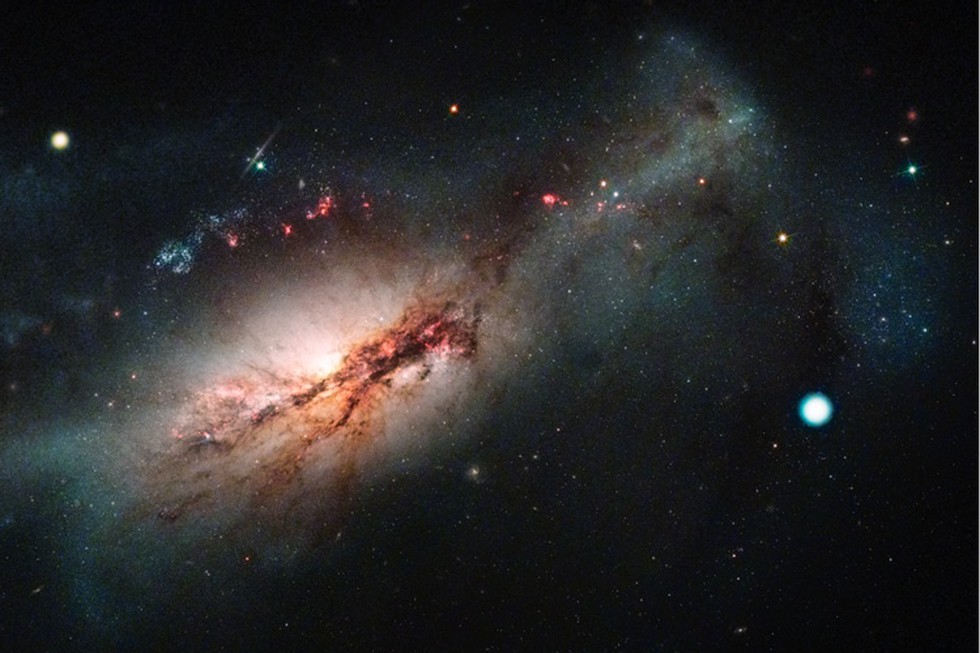Astronomers from the International Supernova Research Consortium (ISRC) have recently identified a new Type Ia supernova, designated SN 2024A, in the outskirts of the spiral galaxy NGC 1234. This discovery holds significant implications for cosmological research due to the supernova’s predictable luminosity, making it a valuable tool for measuring cosmic distances.
Discovery and Observation
The discovery of SN 2024A was facilitated by data from the Hubble Space Telescope and ground-based observatories. It was initially detected in early May by graduate students during a routine survey of nearby galaxies. Follow-up observations confirmed its identity and provided crucial data for ongoing studies.
Nature of Type Ia Supernovae
Type Ia supernovae occur when a white dwarf star, the remnant of a Sun-like star that has consumed its nuclear fuel, accretes enough material from a companion star to trigger a runaway nuclear fusion reaction. This process releases an enormous amount of energy, temporarily outshining entire galaxies.
Role in Cosmology
These supernovae serve as standard candles, allowing astronomers to accurately measure distances to faraway galaxies. This capability helps refine our understanding of the expansion rate of the universe and provides insights into the nature of dark energy, a mysterious force driving the universe’s accelerated expansion.
Significance of SN 2024A
SN 2024A is situated approximately 50 million light-years away from Earth in NGC 1234. Continued monitoring by the ISRC aims to uncover more about the mechanisms governing Type Ia supernovae and their contributions to cosmic evolution and stellar dynamics.
Conclusion
The discovery of SN 2024A highlights the collaborative efforts and advanced observational technologies that are pivotal in advancing astrophysical research. It underscores the ongoing quest to unravel the complexities of the universe’s expansion and the fundamental forces shaping its evolution.
Multiple Choice Questions (MCQs) with Answers:
- What is the significance of Type Ia supernovae in cosmological studies?
- A) They emit the most powerful gamma-ray bursts.
- B) They can be used to measure cosmic distances.
- C) They create black holes.
- D) They are remnants of massive stars.
- Answer: B) They can be used to measure cosmic distances.
- How do Type Ia supernovae originate?
- A) From the collapse of massive stars.
- B) By merging neutron stars.
- C) Through the explosion of white dwarf stars.
- D) From the collision of gas clouds.
- Answer: C) Through the explosion of white dwarf stars.
- Where was SN 2024A discovered?
- A) In the center of the Milky Way galaxy.
- B) In the outskirts of galaxy NGC 1234.
- C) In the Andromeda galaxy.
- D) In a globular cluster.
- Answer: B) In the outskirts of galaxy NGC 1234.
- What role do Type Ia supernovae play in understanding dark energy?
- A) They absorb dark energy.
- B) They emit dark energy.
- C) They help measure distances and constrain the nature of dark energy.
- D) They accelerate the universe’s expansion.
- Answer: C) They help measure distances and constrain the nature of dark energy.
- How far away is SN 2024A from Earth?
- A) Approximately 5 million light-years.
- B) About 100 million light-years.
- C) Roughly 50 million light-years.
- D) Over 1 billion light-years.
- Answer: C) Roughly 50 million light-years.
